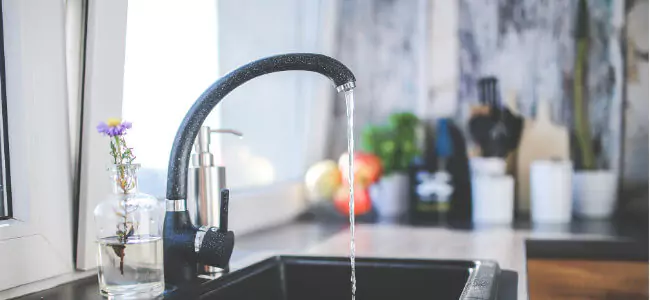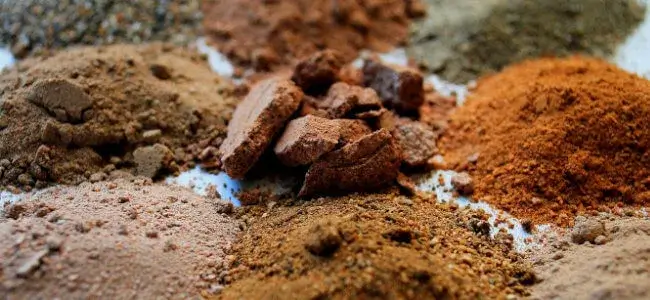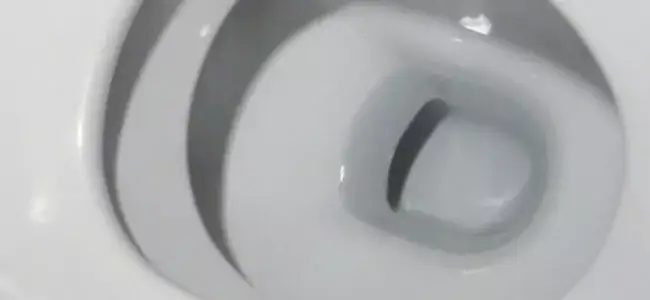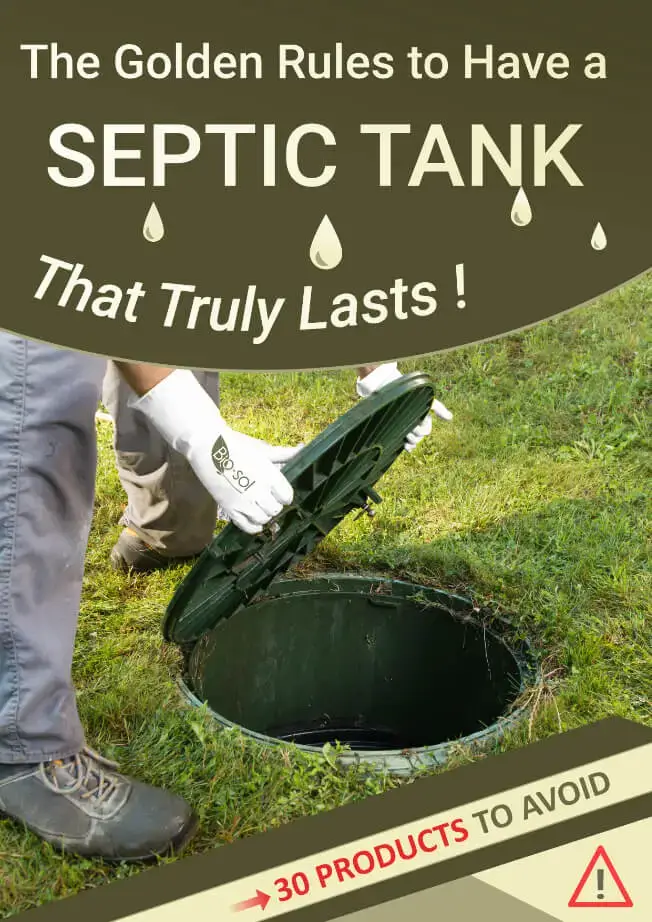Here’s why you should reduce water consumption if you have a septic tank

TABLE OF CONTENTS
Water conservation should be a priority for everyone but more so for those who own a septic system. By reducing water consumption in your household, you will have inadvertently lengthened the life span of your septic system. Minimizing water usage helps to keep the solids settled down in the sludge layer while the Fats, Oils, and Grease continues to float on the top in the scum layer. This process helps in achieving of primary treatment of wastewater in the septic tank.
Hydraulic overloading of septic systems
When designing a septic system, the number of bedrooms in a house has to be put into consideration. This is because the more the bedrooms a house has, the more the water that will be consumed. Based on this information, the recommended size of a septic tank is installed on the property. Unfortunately, some households use too much water and end up overloading their system hydraulically. There are several scenarios that might cause hydraulic overloading including but not limited to;
- Doing several loads of laundry back to back
- A leaking toilet reservoir that ends up sending clean water into the septic tank
- Taking several showers back to back
A septic tank typically has an incoming flow rate that is conducive for the settling of the scum and sludge layers while giving bacteria enough time to digest the organic waste. When water starts coming in faster than the tank can handle, this process is destabilized and wastewater is forced out of the septic tank before the bacteria have had enough time to digest the organic waste. This can result in solids finding their way into the drain field which will ultimately end up clogging the drain field. Once the drain field blocks, the entire system will collapse.
Hydraulic overloading could also lead to the dilution or reduction of bacteria in the septic tank and this will make the septic tanks less efficient. This is because when the bacteria count goes down, the liquefying of organic waste will be hampered and some of the solid waste might flow to the leach field which will clog up the system. To make matters worse, most of the water that results in hydraulic overloading of the system is clean water that doesn’t have bacteria. So apart from washing the bacteria away from the septic tank, this water does not help to replenish the bacteria.
The leading causes of hydraulic overloading
Leaking faucets
Leaking toilets and faucets do more harm than merely annoying your family and friends. For starters, leaks mean you are losing water and that is not good for the environment. Leaking faucets might look negligible but they waste a lot of water if unchecked. Research shows that a tap that leaks at the rate of one drop a minute will end up losing 317 gallons (1,200 liters) of water per annum. That’s enough water to fill up 7 large bathtubs. All these water dripping day and night will easily result in hydraulic overloading of your septic system. This is why you should fix any leaks as soon as you discover them.
Too much laundry
According to National Geographic, a load full of laundry will consume 20-40 gallons of water depending on how efficient the washing machine is. If you were to do several loads of laundry back to back, you would end up sending hundreds of gallons of water into the septic tank. Apart from overloading your system hydraulically, the water will have too much detergent which might harm the helpful bacteria in the septic tank. To avoid this, it is recommended to spread out your laundry instead of letting it accumulate and then doing it all at once. This is especially useful if you have a large household.
Water softener
Use of water softeners has also been linked to hydraulic loading. Water softeners remove dissolved magnesium and calcium in water through an ion exchange process. Water is passed through a tank that has ion exchange beads that are saturated with sodium. These magnesium and calcium ions replace the sodium ions on the resin and sodium is released into the water. After the resin gets saturated with magnesium and calcium, backwash regeneration initiates. The backwash from the water softener will enter the septic tank and this is what results in the overloading. If you must use a water softener, then you may want to avoid sending the backwash into the septic tank.
Top 7 tips to reduce water consumption in your home
Shower
According to CRD, showering accounts for 19% of all water consumption in the house which makes it the 2nd largest consumer of water. It translates to approximately 15,336 liters per year which would be enough water to fill 18,000 swimming pools annually. If you reduce water consumption in the shower, you can save you a lot of water and also help to prevent overloading the septic system. Here are some tips that can help you save water in the shower.
- Take shorter baths – a study found out that the average Canadian stands under a hot shower for 8.1 minutes a day. Cutting this time by 50% can save you a lot of water, especially if every member of the family participates.
- Replace the shower head – some showerheads, especially the old ones, waste a lot of water. Look for a showerhead that has the WaterSense logo because that indicates it has been tested and proven to be a water-efficient showerhead. These showerheads typically use a maximum of 7.6 liters per minute (L/M) and most of them actually use 5.6 L/M. This not only saves you water but lots of kilowatts of energy too
Toilets
Even though flushing technology has improved over the years and less water is wasted in modern toilets, there is still a lot that you can do to reduce water consumption in the toilet. Here are some tips on how you can save water in your home toilets.
- Use a partial flush valve – this technique is not for every toilet because some won’t flush properly without a full flush. If you have a modern toilet, then it will most likely work with a partial flush valve. These valves can be bought at any plumbing and building supplies store.
- Replace leaking flappers – the toilet flapper is the biggest source of toilet leaks in the home. The flapper wears out quickly and this makes water leak from the tank into the bowl. Unfortunately, these leaks can easily go unnoticed because water leaks into the bowl. Dropping some food coloring into your toilet tank can help you know if the water is leaking into the bowl. Flappers are quite inexpensive and easy to install so you should replace them as soon as you detect a leak.
- Replace old toilets – the old toilets use anything from 5-7 gallons for every flush. Since every member of the family typically flushes the toilet around 5 times a day, it can cumulate to lots of gallons in a month. If you have an old house that still uses the old toilets, it might be a good idea to install a modern one which will need as little as 1.6 gallons for every flush.
Kitchen
The kitchen is one of the places where you can easily reduce water consumption. This is because we use a lot of water during food preparation as well as washing the dishes. Thankfully, it is also possible to save lots of water in the kitchen. Here are some helpful tips to get you started.
- Use a low-flow faucet – a conventional faucet flows at the rate of 3 gallons per minute while a low-flow one only consumes 1.5 gallons per minute. Installing a low-flow faucet with therefore cut down your kitchen water consumption by at least 50%
- Don’t leave taps running – always ensure the taps are turned off once you are done using them. Also, do not let the tap run when multitasking. For instance, if you want to rinse a cooking stick while cooking, turn off the tap as soon as you are done with the rinsing. This simple strategy could save you hundreds of gallons of water.
- Repair leaky faucets – it may look negligible but in the grand scheme of things, a drippy faucet could lose you up to 20 gallons of water per day. You should, therefore, fix any leaky faucet as soon as it starts leaking to avoid this wanton wastage of water.
Laundry
Approximately 22% of your household water is consumed by laundry. Wastewater from the laundry room can have a serious impact on the health of your septic system. For starters, using bleach and some detergents can lead to the deterioration of the helpful bacteria in the septic tank. Also, sending too much water down the drain from your laundry room can result in hydraulic overload. The following are some tips that might help you to reduce water consumption when doing laundry.
- Use a good washer – the term good is arguably relative but in this case, it will mean a washer that is not only energy efficient but water efficient as well. In terms of water efficiency, the best washing machines are the front-loading ones. Even though a standard machine uses up to 41 gallons of water for every load, a water-efficient one uses only 28 gallons per load. Just switching to a water-efficient machine will save you at least 6,000 gallons of water annually.
- Plan your laundry well – if you have a septic system, it is advisable to spread out your laundry instead of doing too many loads on a single day back to back. This helps to prevent the hydraulic loading of the system. If you only have a few clothes to wash, ensure you adjusted the settings to the smallest capacity possible. This will help you to save water and energy. You can also skip the extra rinse cycle except under special circumstances.
Gardening
Most people assume that gardening and water conservation are antonyms. But it is actually possible to save water while gardening through some simple techniques. When water is utilized properly, gardening will no longer seem like a wanton waste of precious water. Here are some tips on saving water in your garden.
- Use efficient irrigation techniques – some irrigation techniques waste a lot of water. For instance, if you use a sprinkler to water your garden, lots of the water ends up getting sprayed away from the garden. Using drip irrigation can help to curb such wastages. Additionally, irrigation should only be done early in the morning or late in the evening when there is very little evaporation. This will ensure that the soil retains as much water as possible which will help to reduce the amount of water needed.
- Water-friendly planting – water friendly planting means choosing your plants wisely depending on the water situation in your area. If there is lots of water scarcity all year round, you may want to grow plants that do not require a lot of water. If most of the water that your plants will use will come from your tap, you might want to reconsider the kinds of plants you are planning to plant.
- Know your plants – one of the main reasons why people waste a lot of water in their gardens is the misguided assumption that all plants need the same amount of water. But there is nothing further from the truth. There are some plant species that require large quantities of water while others need very little water. Knowing your plants will help you plan out your irrigation activity for maximum efficiency.
- Maintain your irrigation system – maintaining your irrigation system means checking it regularly to ensure there are no leaks or breakages. You may also want to install a rainwater harvesting system to ease pressure from your normal water supply.
Water-efficient appliances
Household appliances like washing machines and dishwashers use up a lot of water. This is why you should seriously consider investing in water-efficient appliances. As we have already pointed out, switching to a water-efficient washing machine will reduce water consumption in the laundry room by almost 50%. If you went with water-efficient appliances across the entire house, you will end up saving hundreds of gallons of water. The following are some considerations to make to ensure water efficiency in your house.
- Buy a water-efficient washing machine
- Install a two-step toilet
- Look for a dishwasher that has features for saving water and energy. These include skipping the pre-rinse step, economy mode settings, and the ability to adjust water amounts and temperature settings.
Reduce the flow rate
The water flow rate refers to the speed at which water flows in liters per second. Most people confuse the flow rate with the pressure but they are not the same thing. The water pressure refers to the amount of force that pushes the water through the pipes and it is measured in kilopascals (kPa). Water pressure will determine the kind of hot water system you can have in your home but the showerheads and tapware determine the flow. Reducing the water flow rate will help to reduce the amount of water used in the showerheads and taps for every minute the faucets are on. You can reduce the flow rate by turning the knob on the meter which is either located outside the house or somewhere below the kitchen sink.
Conclusion
It is no secret that water is Canada’s greatest natural resource. Because we have more freshwater than most of the other countries in the world, some people assume that water is unlimited. But it is not. Freshwater is a finite resource that gets depleted with every usage. When you conserve water, you are not only helping your septic system to function optimally but you are also helping the environment.
OUR LATEST BLOG POSTS

Strange facts about septic systems
If you are a septic system owner, you might have heard all manner of myths. For instance, there is a common myth that throwing a dead cat in the septic tank can help rejuvenate bacteria and thereby make the septic tank more effective. But is this even true? In this article, we will not only answer that […]

Soils types and their impact on septic systems
SOILS TYPES AND THEIR IMPACT ON SEPTIC SYSTEMS However good your septic system is, it depends on the right soil type to complete the process of purifying the wastewater from your home. The soil type in the drainfield area will determine how well the effluent is filtered and if the water that is sent back to the […]

Avoid flushing these if you have a septic tank
Most homeowners wrongfully assume that their toilet can serve as some sort of garbage disposal. As a result, they end up flushing all manner of things in the toilets. Some of the things that are flushed down the toilet are actually innocent mistakes because homeowners think that is the right way to dispose of the products while in other cases, it is just a don’t care attitude. Whichever the case may be, flushing some of these things can result in septic system failure and it could cost you a fortune. We have rounded up some of the commonly-flushed products that you should never flush if you have a septic system.
PERFECT! I WOULD NEED...
Discover which products are the best for your needs!You can contact us at 1-800-378-6132 (toll free) or click on the following button to access our free online evaluation.
GET A QUOTE ONLINELog in to your account
Whoops! It happens sometimes...
CREATE A NEW ACCOUNT
CONGRATS!
You are now registered and ready to go. You can add and change any of your information on your client profile.
Unfortunately, we do not ship our products to the USA at the moment.
But, if you live in the United States and would like to order them, please fill in the form below. You will then be notified as soon as they are available in your country.
Thank you for your understanding!
Malheureusement, nous n’expédions pas nos produits en France pour le moment.
Mais, si vous êtes résident français et aimeriez les commander, remplissez s’il vous plaît le formulaire ci-dessous. Nous pourrons ainsi vous aviser aussitôt qu’ils seront disponibles dans votre pays.
Merci de votre compréhension!

-
30 products to avoid
-
What to replace them with
-
And everything you should know about your septic system
DOWNLOAD THIS FREE EBOOK!
Which email address should we send it to?


